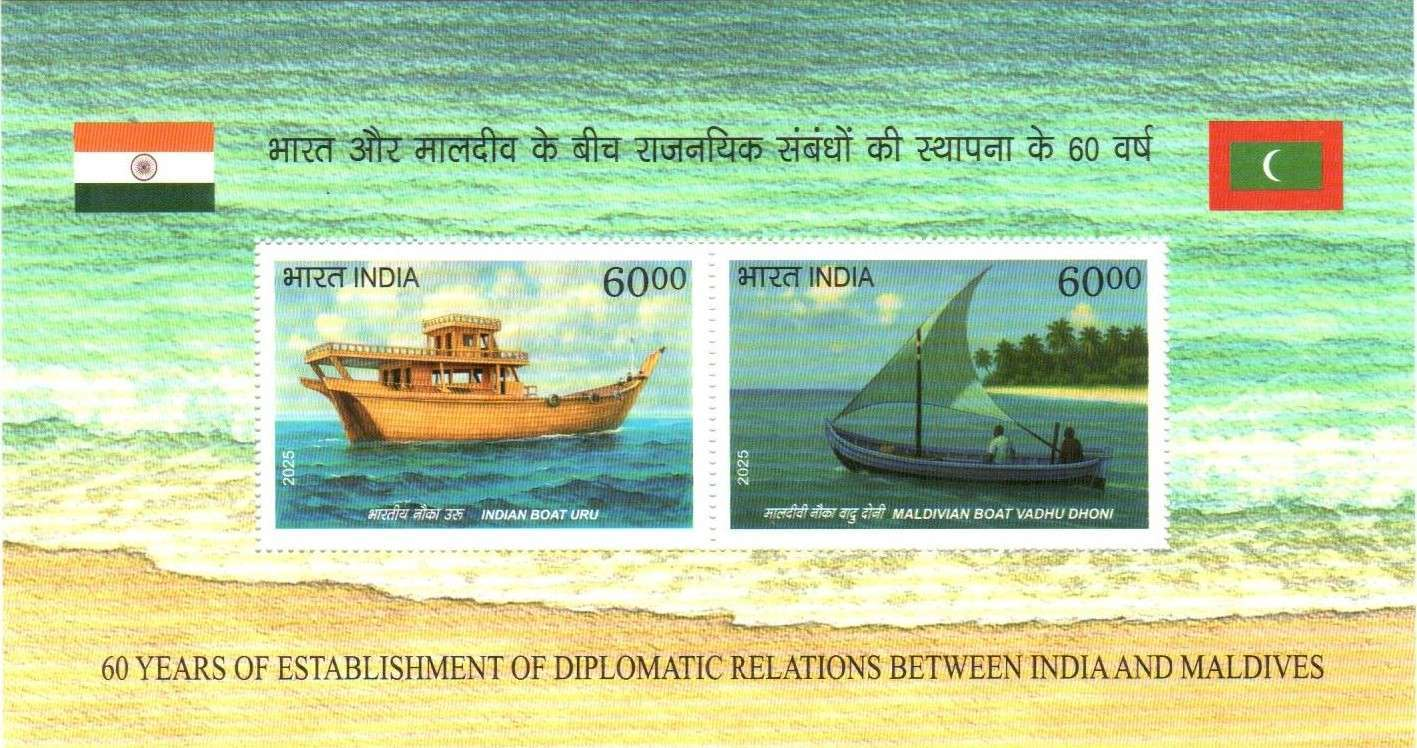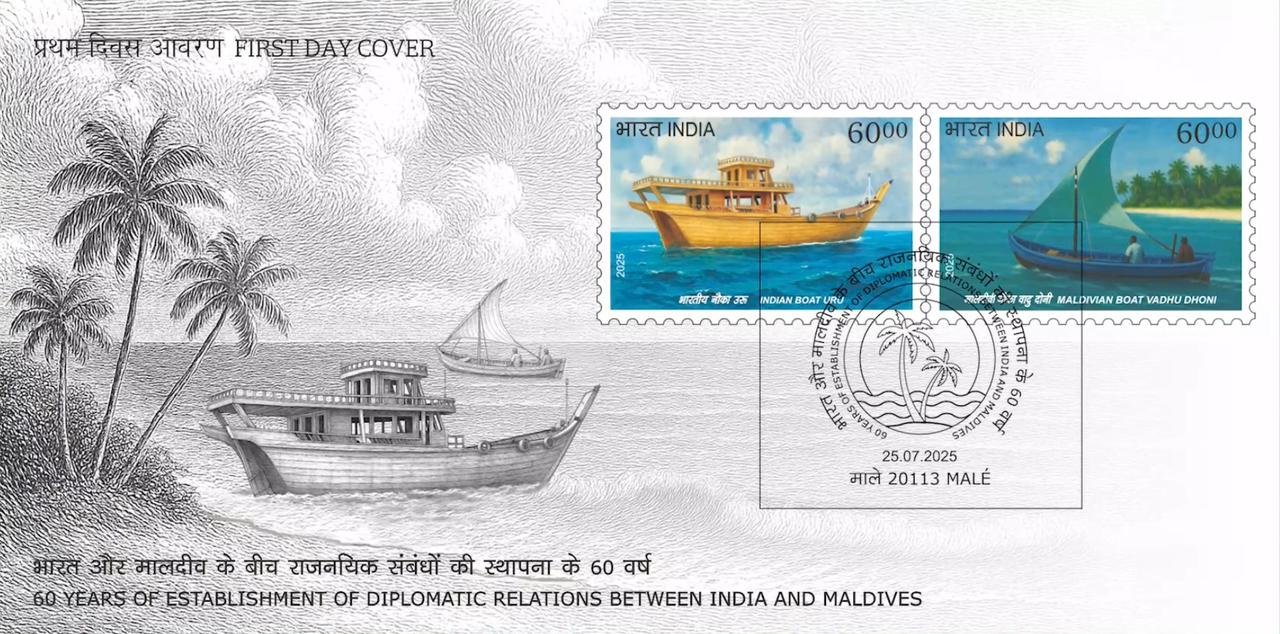India Maldives Diplomatic Relations

Technical Data
| Date of Issue | July 25, 2025 |
|---|---|
| Denomination | Rs. 120 |
| Quantity | 111,200 |
| Printer | Security Printing Press, Hyderabad |
| Printing Process | Wet Offset |
| Colors | Multicolor |
| Credit (Designed By) | Sh. Sankha Samanta |
| Catalog Codes |
Michel IN 2025.07.25-02 |
| Themes | Diplomacy | Fishing-boats | Flags |
India–Maldives: A Shared Maritime Heritage
The roots of India–Maldives relations stretch back centuries, shaped by history, culture, faith, and the sea. From the Giravaaru settlers from South India to the footprints of the Chola Empire’s naval campaigns in the 10th century, the Maldives and India have long shared a common heritage.
Across time, this bond has been enriched by the traditions of Hinduism, Buddhism, and later Islam, reflected in the ancient Srauta rituals, sun worship, and the Buddhist stupas and viharas discovered on islands such as Male, Fuvahmulah, Gan, and Thoddoo. These shared spiritual legacies have nurtured values of harmony, empathy, peaceful coexistence, and mutual respect that continue to guide relations between the two nations.
From Independence to Diplomacy
When the Maldives gained independence from British protectorate status on 26 July 1965, India was among the very first to recognize it as a sovereign nation. Formal diplomatic ties were established the same year, on 1 November 1965.
India set up its Resident High Commission in Male in 1978, becoming the first country to do so. The Maldives, in turn, opened its Resident High Commission in New Delhi in 2004, cementing a new phase in bilateral engagement.
India as the “First Responder”
India has consistently stood by the Maldives in times of crisis:
- Operation Cactus (1988): swift military assistance during an attempted coup
- Operation Castor (2004): emergency relief following the Indian Ocean tsunami
- Operation Neer (2014): water crisis assistance in Male
- Operation Sanjeevni & Vaccine Maitri (2020–21): medical aid and vaccines during the COVID-19 pandemic
Through its Neighborhood First Policy (2014) and SAGAR vision (Security and Growth for All in the Region), later expanded into MAHASAGAR, India has reaffirmed its role as a trusted partner and first responder for the Maldives.
Trade, Tourism & People-to-People Ties
India is among the top trading partners of the Maldives, with growing air and sea links boosting commerce. Indian tourists are among the largest contributors to the Maldivian tourism sector, while Indian professionals, enterprises, and cultural exchanges continue to strengthen ties.
Centuries of interaction have fostered shared traditions in language, art, craftsmanship, and cuisine, weaving a cultural fabric that unites the two nations.
Maritime Heritage on Stamps: Uru and Vadhu Dhoni
To celebrate this enduring partnership, the Department of Posts proudly issues a commemorative postage stamp featuring the Uru of India and the Vadhu Dhoni of the Maldives—two icons of shared maritime heritage.
- The Uru – India’s Mastercraft from Beypore:
Handcrafted in Kerala’s historic boatyards, the Uru or “Fat Boat” has been part of Indian Ocean trade for centuries. Built from teak wood, these massive dhows are renowned for their strength and elegance. Uru-making remains an artisanal tradition, passed down through generations without blueprints—an enduring symbol of India’s seafaring legacy. - The Vadhu Dhoni – Pride of the Maldivian Seas:
A traditional fishing vessel, the Vadhu Dhoni is crafted for navigating lagoons and reefs. While many are now motor-powered, some retain their sails, carrying forward the tradition of Maldivian seafaring. Closely tied to island life and fishing culture, the Dhoni reflects the Maldives’ deep bond with the ocean.
A Symbol of Friendship
This stamp issue honors the timeless maritime traditions of India and the Maldives, celebrating a partnership anchored in history, enriched by culture, and propelled by cooperation. It stands as a philatelic tribute to the shared oceanic legacy and the journey of mutual progress undertaken by the two nations.
First Day Cover

